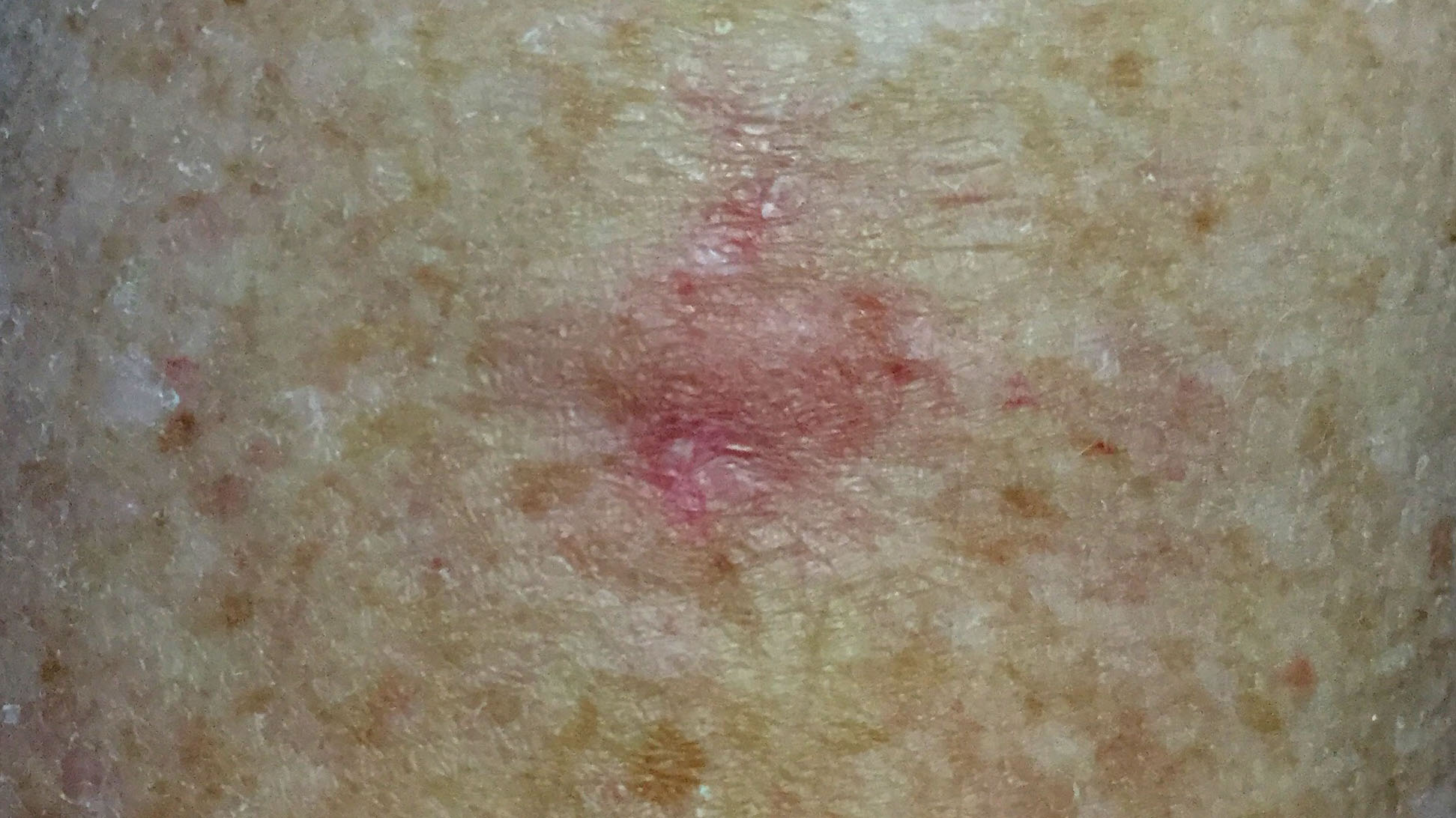Bowen’s Disease: Symptoms, Causes & Treatments
What are the symptoms of Bowen’s disease?
Bowen’s disease, also known as squamous cell carcinoma in situ, is a type of early skin cancer. The main symptoms include:
Skin Lesions:
- Reddish-brown, crusty or scaly patches on the skin
- Lesions are often well-demarcated with a rough, irregular surface
- The patches may be circular or oval-shaped
- Lesions are slow-growing over months or years
Changes in Lesion Appearance:
- Thickening of the skin patch over time
- Color may intensify from red to reddish-brown
- Development of raised, rolled edges at the lesion borders
- Possible oozing, bleeding or crusting of the lesion surface
Other Symptoms:
- Itching, burning or persistent tenderness in the affected area
- Lesions may grow in size gradually
- Multiple lesions can appear, especially in sun-exposed areas
Common Sites:
- Frequently occurs on sun-exposed areas like the neck, shoulders, arms, legs and head/face
- Can also develop in non-sun-exposed areas like the palms, soles, genitals
While Bowen’s lesions themselves are not invasive cancers initially, they have a risk of progressing into invasive squamous cell carcinomas if left untreated over time. Early diagnosis and treatment by a healthcare provider is important.
The lesions are often initially mistaken for rashes, eczema or fungal infections. Any persistent, non-healing skin patch or growth should be evaluated by a dermatologist.
What are the causes of Bowen’s disease?
The exact cause of Bowen’s disease (squamous cell carcinoma in situ) is not fully understood, but several risk factors have been identified:
- Ultraviolet (UV) radiation exposure
- Excessive sun exposure or use of tanning beds is a major risk factor
- UV radiation can damage DNA in skin cells, leading to uncontrolled growth
- Chronic skin injuries or inflammation
- Areas of previous burns, scars, chronic radiation dermatitis or chronic skin conditions are more prone to developing Bowen’s disease
- Exposure to arsenic
- Increased risk in people exposed to arsenic compounds through work or environmental factors
- Human papillomavirus (HPV) infection
- Certain high-risk strains of HPV may play a role, especially for lesions in the genital area
- Immunosuppression
- People with weakened immune systems due to conditions like HIV/AIDS or immunosuppressive drugs have higher risk
- Genetic predisposition
- Some genetic mutations or syndromes like Muir-Torre syndrome increase Bowen’s risk
- Advancing age
- The disease is more common in older adults over 60 years
The underlying cause relates to DNA mutations and uncontrolled growth of the skin’s squamous cells, allowing them to multiply excessively without maturing and shedding normally. UV damage is thought to initiate this process in many cases.
While Bowen’s itself is considered a pre-cancerous condition confined to the outer skin layer initially, it has potential to progress into invasive squamous cell carcinoma if left untreated over time.
What is the treatment for Bowen’s disease?
The treatment for Bowen’s disease aims to remove or destroy the abnormal skin lesions before they potentially progress to invasive squamous cell carcinoma. The treatment options include:
Topical Treatments:
- 5-Fluorouracil cream – A chemotherapy cream applied directly to the lesions
- Imiquimod cream – An immune response modifier cream that promotes destruction of abnormal cells
- Ingenol mebutate gel – Derived from a plant, it causes shedding of cancerous skin cells
Cryotherapy (Cryosurgery):
- Freezing the lesions with liquid nitrogen to destroy the abnormal cells
Photodynamic Therapy (PDT):
- A light-sensitizing agent is applied, followed by exposure to a specific wavelength of light that kills the cancerous cells
Surgical Excision:
- Cutting out the entire skin lesion along with a margin of normal tissue
- Suitable for well-demarcated, localized Bowen’s lesions
Mohs Micrographic Surgery:
- Layer-by-layer surgical removal of cancerous cells, with microscopic examination to ensure complete removal
Other Therapies:
- Laser therapy
- Curettage (scraping) followed by electrodesiccation
- Radiation therapy for larger lesions
The choice depends on factors like the size, location and number of lesions, patient age and preference. Combinations of treatments may be used in some cases.
Close monitoring after treatment is important, as new lesions can develop over time. Prevention through sun protection is also recommended to reduce risk of recurrence or new skin cancers.




